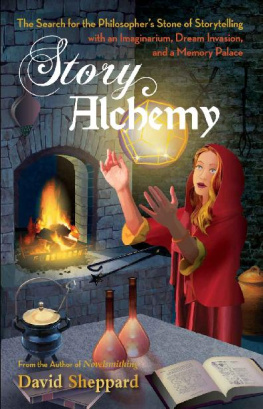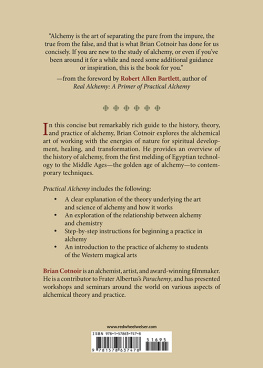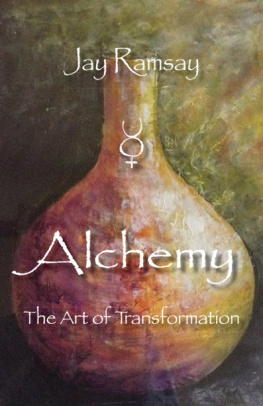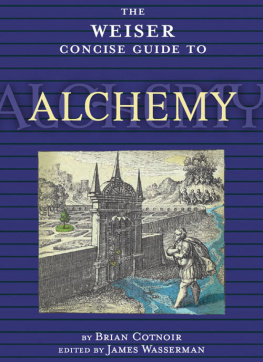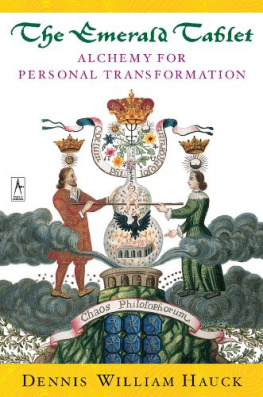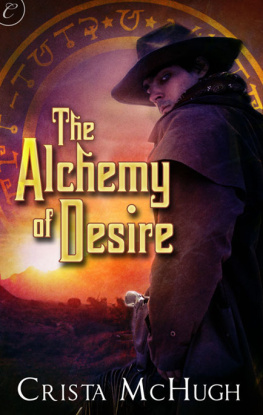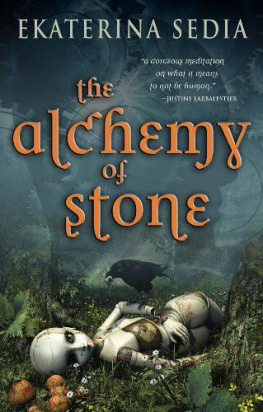Chungtao Ho - Internal Alchemy for Everyone
Here you can read online Chungtao Ho - Internal Alchemy for Everyone full text of the book (entire story) in english for free. Download pdf and epub, get meaning, cover and reviews about this ebook. year: 2018, publisher: Three Pines Press, genre: Religion. Description of the work, (preface) as well as reviews are available. Best literature library LitArk.com created for fans of good reading and offers a wide selection of genres:
Romance novel
Science fiction
Adventure
Detective
Science
History
Home and family
Prose
Art
Politics
Computer
Non-fiction
Religion
Business
Children
Humor
Choose a favorite category and find really read worthwhile books. Enjoy immersion in the world of imagination, feel the emotions of the characters or learn something new for yourself, make an fascinating discovery.

- Book:Internal Alchemy for Everyone
- Author:
- Publisher:Three Pines Press
- Genre:
- Year:2018
- Rating:5 / 5
- Favourites:Add to favourites
- Your mark:
- 100
- 1
- 2
- 3
- 4
- 5
Internal Alchemy for Everyone: summary, description and annotation
We offer to read an annotation, description, summary or preface (depends on what the author of the book "Internal Alchemy for Everyone" wrote himself). If you haven't found the necessary information about the book — write in the comments, we will try to find it.
Internal Alchemy for Everyone — read online for free the complete book (whole text) full work
Below is the text of the book, divided by pages. System saving the place of the last page read, allows you to conveniently read the book "Internal Alchemy for Everyone" online for free, without having to search again every time where you left off. Put a bookmark, and you can go to the page where you finished reading at any time.
Font size:
Interval:
Bookmark:
Internal Alchemy
for
Everyone
by
Chungtao Ho
ContentsAcknowledgments
Dedication
Introduction
Theory
1. Studying Alchemy
2. Historical Connections
3. Major Texts and Lineages
4. Key Concepts
5. Body and Life
6. The Holy Fetus
7. Fetal Unfolding
Practice
8. Preparation
9. Potential Hazards
10. Stage One: Basic Practice
11. Effects and Benefits
12. Stage Two: Refining Essence
13. Stage Three: Refining Energy
14. Stage Four: Refining Spirit
Conclusion
Appendices
1. The Eight Extraordinary Vessel s
2. The Practice of Taiji Quan
Bibliography
List of Illustrations
Fig. 1. One of the 500 arhats ( luohan ) at Baoguang si near Chengdu, Sichuan (orig. photograph 1972). Source: Science and Civilisation in China 5:33, Fig. 1553. Fig. 2. The Cosmology of Internal Alchemy. Source: Michael Winn, Primordial Tai Chi: Way of Enlightened Self-Love. www.HealingTaoUSA. com, 2018. Fig. 3. The main energy hub: Compass Center ( guizhong ) or Mysterious Female ( xuanpin ). Source: Drawing by the author. Fig. 4. Meditation on the divine child. Source: Dadong zhenjing (Perfect Scripture of Great Pervasion). Fig. 5. The holy fetus breaks away from the top of the adepts head. Source: Jindan dayao (Great Essentials of the Golden Elixir) . Fig. 6. The holy fetus in the body of the adept. Source: Jindan dayao . Fig. 7. The divine child breaks through the head of the adept. Source: Xingming guizhi (Pointers to the Cultivation of Inner Nature and Life-Destiny). Fig. 8. An adept riding a crane and ascending into heaven. Source: Xingming guizhi.Acknowledgments
I am deeply grateful to Professor Livia Kohn for helping to edit this book as well as her support in completing it. I would also like to thank Professor Fabrizio Pregadio, who approved the citations from his works.
Dedication
To My Wonderful Grandmother
Li Gui
(1901-1973)
A Memorial in Her Honor
The life of my grandmother has had a direct influence on the writing of this book. She had two boys, the first of whom was my father. Soon after the second was born, my grandfather died. She decided not to remarry and instead worked to support the family. In 1953, when I was two years old, my mother fell ill and died. After that, my grandmother took over my upbringing.
In 1970, I contracted a serious disease, and she took care of me in the hospital 24 hours a day. She was a devout Buddhist, always reading sutras and chanting incantations to the bodhisattvas. In 1973, when her end drew near, she said to me, Dont be sad, but spend more time studying religions. She said that many bodhisattvas had come to her hospital room, welcoming her to the eternal world. Then she passed with a smile.
After this, I transferred my major from engineering to philosophy, but after receiving the B.A., I found myself betraying philosophy since I deeply disliked its more speculative side and especially Western formshowever much they were of theoretical interestbecause they did nothing much to help solve the problems of human life.
I duly took up the study of Buddhism in graduate school, but again found it disappointing. Except Tantrism, nearly all Buddhist schools stress the reading and interpretation of the sutras, believing that one can become a Buddha only through disciplined practice over many lives of transmigration and rebirth. Therefore, I continued to seek a system that would actually address the problems of current living.
Eventually, I came across Daoist internal alchemy. Its master Zhang Boduan (987?-1082) said, No longer waiting for other lives through many rounds of transmigration, I now have acquired the supernatural powers of Buddhism. This was very inspiring. I have since then spent several decades studying and practicing internal alchemy. This book is the result.
IntroductionThis book makes the self-cultivation of Chinese internal alchemy available to everyone. It is a practice simpler, easier, more comfortable, and more effective than Indian yoga, Daoist meditation, or Buddhist insight. Its practice provides excellent health in a short period of time as well as a new understanding of life and world, leading to an overall improvement of the quality of life.
Chinese alchemy divides into the two areas of external ( waidan ) and internal ( internal alchemy ). The former is a form of early chemistry and as such can be easily understood, while the latter is an esoteric system and thus tends to be shrouded in mystery. Over the past century, many scholars have attempted to interpret it, using different academic categories, including philosophy, psychology, physiology, biochemistry, and qigong. It is still not clear, however, whether any of them really came close to explaining it, as none of them have provided a fully satisfactory explanation.
I would, therefore, like to start from another angle. Avoiding predetermined academic categories, I propose to dive right into an outline of its basic concepts while providing simple and satisfactory explanations, then follow those up with detailed and easily accessible instructions on how to practice.
When people hear of internal alchemy, they think it is just a kind of ancient lore, a dead subject, something that exists only in the reference shelves of the library and has nothing to do with our lives. However, it is in fact a very practical subject, based on the physical training of adepts and the enhanced states of life they experience. Practicing its methods, everyone can gain numerous benefits, including freedom from disease, an extended life expectancy, increased wisdom, and more.
Connection to Science
This book is entitled Internal Alchemy for Everyone , indicating that it presents the system in an easily understandable way. It not only describes internal alchemy as a theory, but also makes it available through experimental verification and wide application. Interpreting its concepts, I invoke the terms of evolutionary theory, because the approaches of both are similar. The theory of evolution is that the human body and mind took many millions of years to evolve into what it is today. Compared to other animals, human beings have high intelligence, the result of this long period of evolution. Based on evolutionary theory, we expect the people of the future to have even larger brains, higher intelligence, and longer life expectancya vision that results in pictures of them as aliens with large heads. This vision of human evolution is highly relevant to internal alchemy, since its practice enhances human capabilitiesphysical, mental, and spiritual.
Modern science has contributed greatly to the expansion of human knowledge; however, the unknown still far exceeds the known. Historically, adepts of internal alchemy carefully observed the changes in human life and discovered that there is a cosmic, vital energy called qi in the body that controls survival and lasts beyond death. By expanding and transforming this energy, people can evolve more rapidly. This cosmic power or vital energy appears in the form of gas in the body, activated at several points, most notably the Compass Center ( guizhong ). When the yang spirit ( yangshen ) enters it, the original substance of the human being is formed into a newly evolving entity, which alchemists call the holy fetus ( shengtai ).
Its composition and development are different from the sexual creation of children, since it comes about due to a process of self-insemination and asexual reproduction. Because men do not have a womb, it grows in the Compass Center for ten months, then moves to the brain for nine years. This feature also holds true for women who have a womb. The holy fetus as based on cosmic energy will developed and grow in the brain for nine years, which is why the brain gets larger and manifests aspects similar to those occurring during the rapid evolution of the human race. The theory may sound incredible, but in many ways it is compatible with science and biology.
Next pageFont size:
Interval:
Bookmark:
Similar books «Internal Alchemy for Everyone»
Look at similar books to Internal Alchemy for Everyone. We have selected literature similar in name and meaning in the hope of providing readers with more options to find new, interesting, not yet read works.
Discussion, reviews of the book Internal Alchemy for Everyone and just readers' own opinions. Leave your comments, write what you think about the work, its meaning or the main characters. Specify what exactly you liked and what you didn't like, and why you think so.

